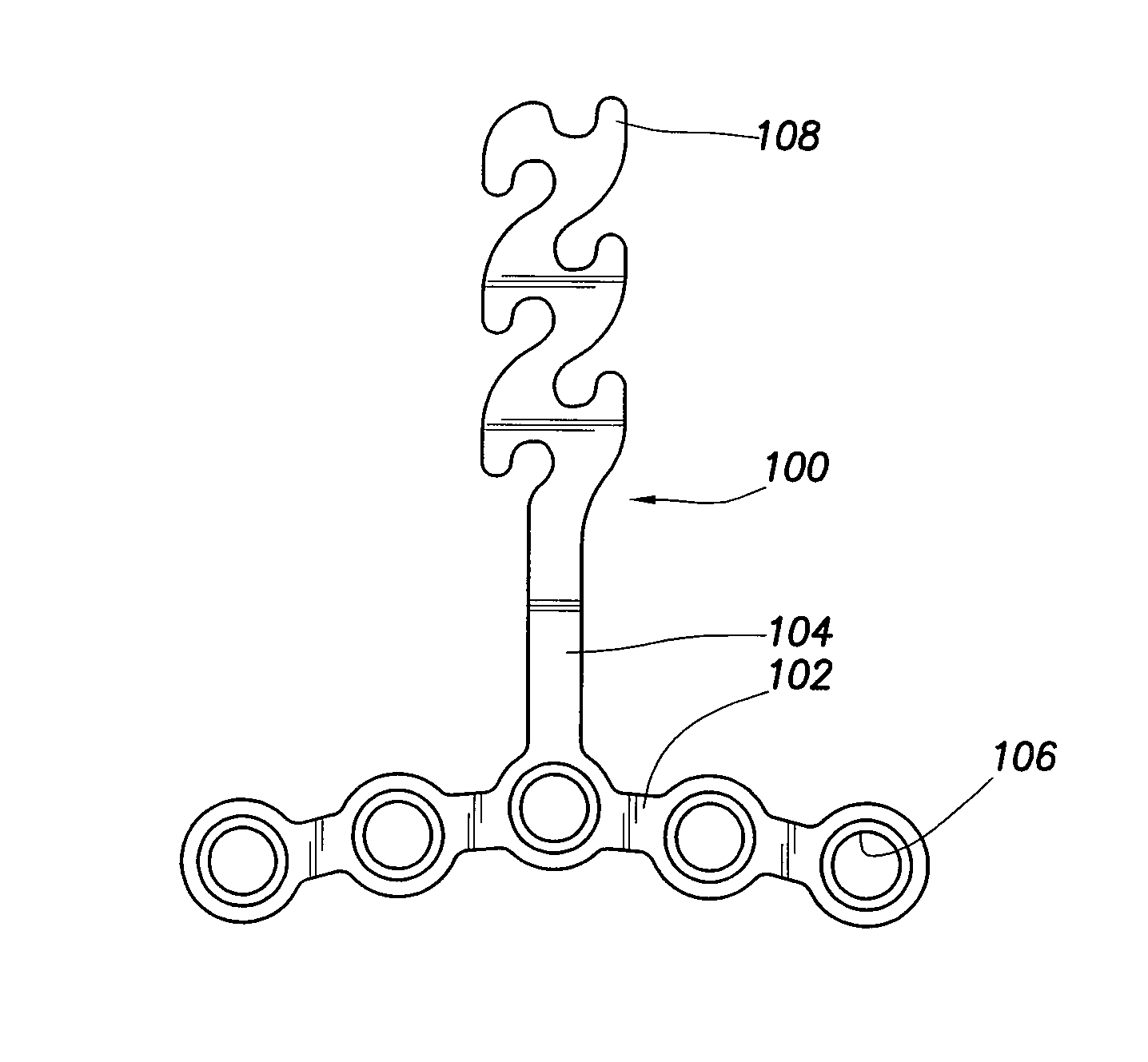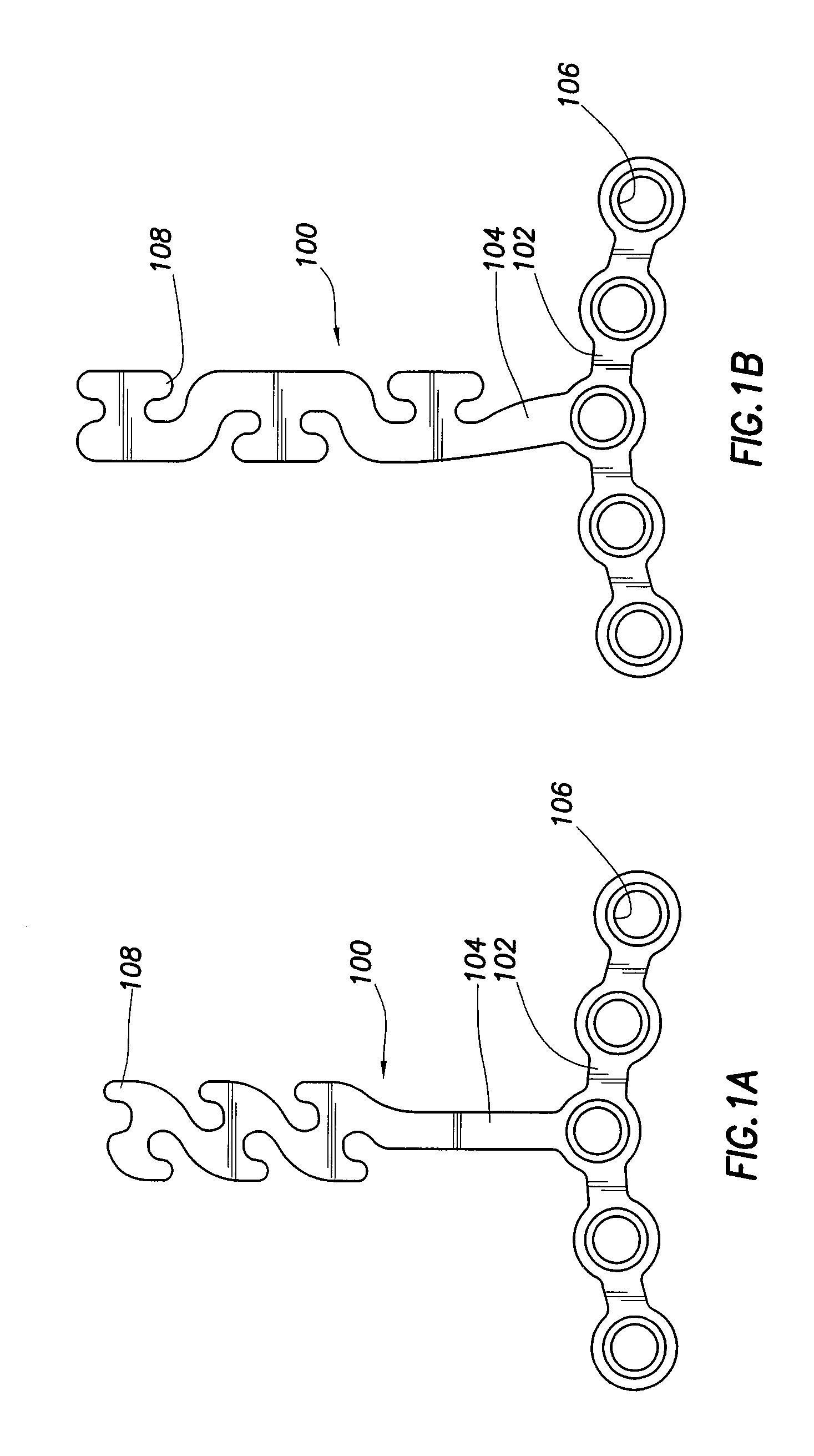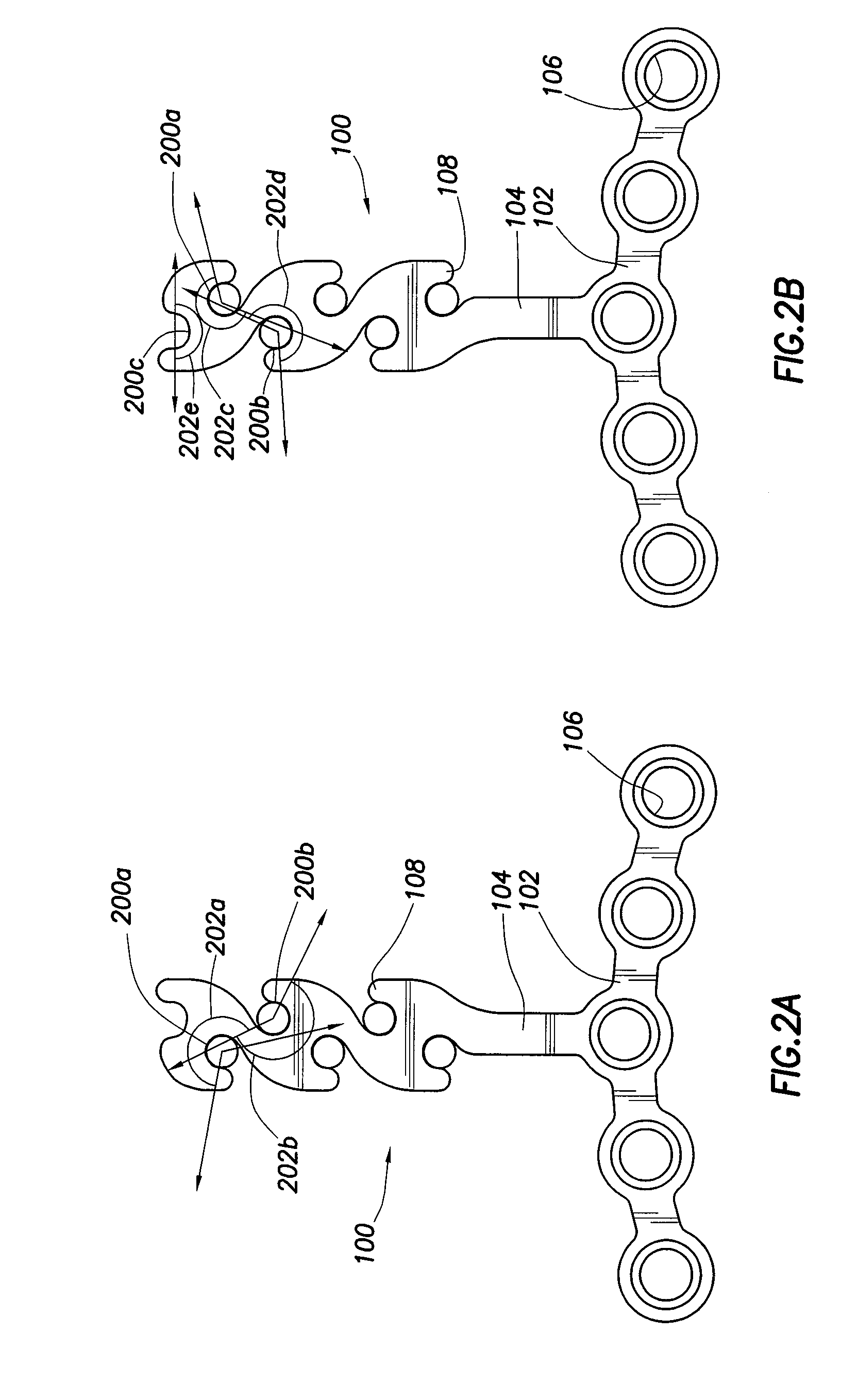Orthodontic Plate and Method
a technology applied in the field of orthodontic plates and methods, can solve the problems of increasing the length of orthodontic treatment time, affecting the treatment effect, so as to achieve the effect of preventing tooth movement and preventing tooth movemen
- Summary
- Abstract
- Description
- Claims
- Application Information
AI Technical Summary
Problems solved by technology
Method used
Image
Examples
Embodiment Construction
[0026] Referring now to the drawings, and in particular to FIGS. 1A and 1B, orthodontic plate 100 is shown having a bendable, malleable, substantially thin, planar construction shown in the form of a T-shaped body. Orthodontic plate 100 has a base 102, and a stem 104, which, upon installation, protrudes through the soft tissue of the gum substantially adjacent a lateral side of the dentition (shown in FIG. 5). The base 102 unitarily formed at one end of the stem 104 includes one or more holes 106 (e.g., 0.160″ diameter) extending through the base 102. The holes 106 are adapted to receive one or more fasteners 400 (shown in FIG. 4), such as flush-mounting screws. The base 102 and the stem 104 are planar, yet bendable to conform to bone contour and directionally fit a desired space. The length of the stem may vary for different applications, but may fall within the range of approximately 0.250″ to 0.450″.
[0027] The fasteners 400 situated within the holes 106 anchor the base 102 again...
PUM
 Login to View More
Login to View More Abstract
Description
Claims
Application Information
 Login to View More
Login to View More - R&D
- Intellectual Property
- Life Sciences
- Materials
- Tech Scout
- Unparalleled Data Quality
- Higher Quality Content
- 60% Fewer Hallucinations
Browse by: Latest US Patents, China's latest patents, Technical Efficacy Thesaurus, Application Domain, Technology Topic, Popular Technical Reports.
© 2025 PatSnap. All rights reserved.Legal|Privacy policy|Modern Slavery Act Transparency Statement|Sitemap|About US| Contact US: help@patsnap.com



